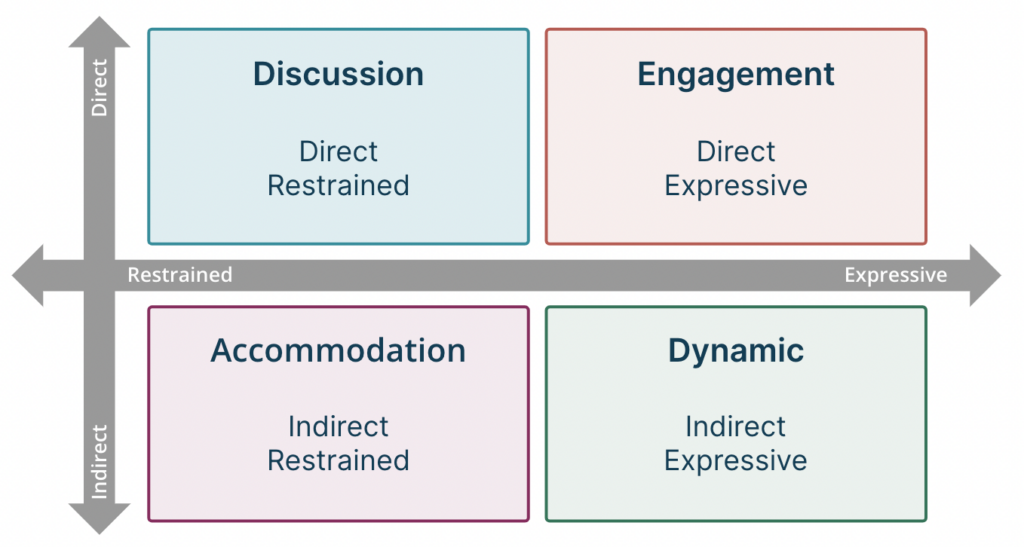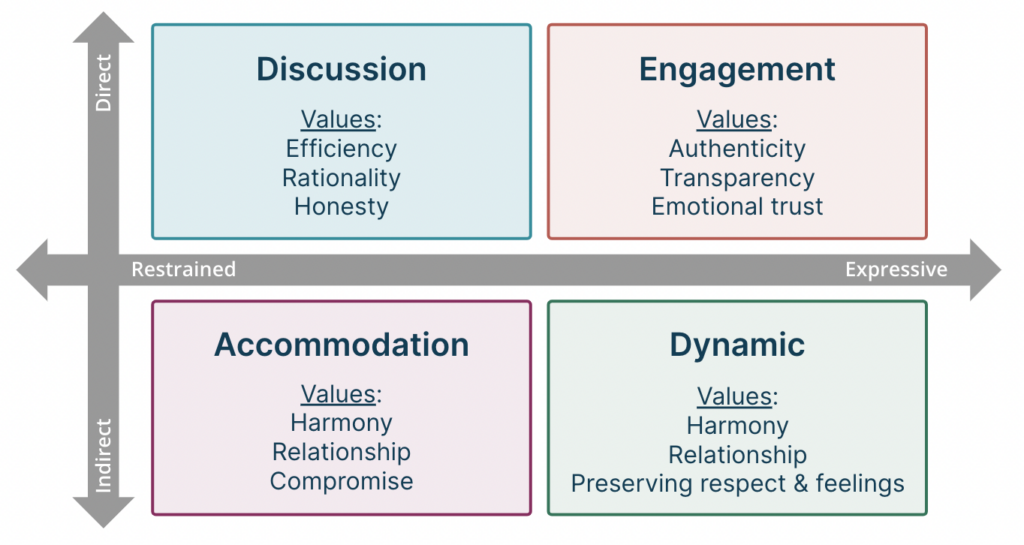Leverage Communication Styles to Better Connect
You can use your understanding of communication styles to improve your interactions with others.
First, review the Communication Styles Matrix presented in “What Kind of Communicator Are You?” for a full overview.

Each communication style can be linked to a set of distinct values. Recognizing and understanding these values can help you build connection with others during disagreements or difficult conversations.
Here are some of the more common values that underpin the four styles:

Considering the underlying values of each communication style can help you reduce friction and have more productive dialogue with others.
Putting values-driven communication into action:
Step 1: Take the time to understand someone’s communication style. During a conversation, if you notice having judgments, try to identify the gap between the values they favor versus yours.
Step 2: Express appreciation for other communication styles by pointing out the values that underpin them. For example:
- “I appreciate your clarity”
- “I appreciate how much you care about compromise”
Step 3: Consider ways you can adapt your style when you are speaking to someone with a different style. For example:
- Ask someone who values emotional expression how they are feeling and/or share your own emotions with them.
- Gently probe about what’s most important to someone with a more restrained communication style. If you are in a dialogue with someone who values emotional restraint, invite them to share more about their experience and what is important to them.
- Use clear, specific requests and concrete examples with someone who communicates more directly.
- Ask more questions and share stories or metaphors to explain yourself with someone who communicates indirectly.
Step 4: Consider asking for what you need. For example, it can help to:
- Kindly ask your conversation partner to rephrase their question or sentiment.
- Tell them you need time to think about what they shared before you respond.
- Say that you’re committed to understanding them, but need more information.
Step 5: Be patient with yourself and others. It can be difficult to adapt to others’ communication styles, and it’s unlikely that you’ll get it right every time. Others may not always respond exactly as we hoped either. Do your best to be gentle with yourself and others, recognizing that it takes time to build effective communication skills.
Reflection
Consider the last difficult conversation you had:
- What values drove the way you communicated? For instance, were you aiming to preserve harmony? Were you trying to be efficient and clear?
- What values might have been driving the other person’s communication? For example, were they prioritizing transparency? Could they have been seeking compromise?
- Are there ways you could have adapted your communication style to honor your values as well as the values of the other person?